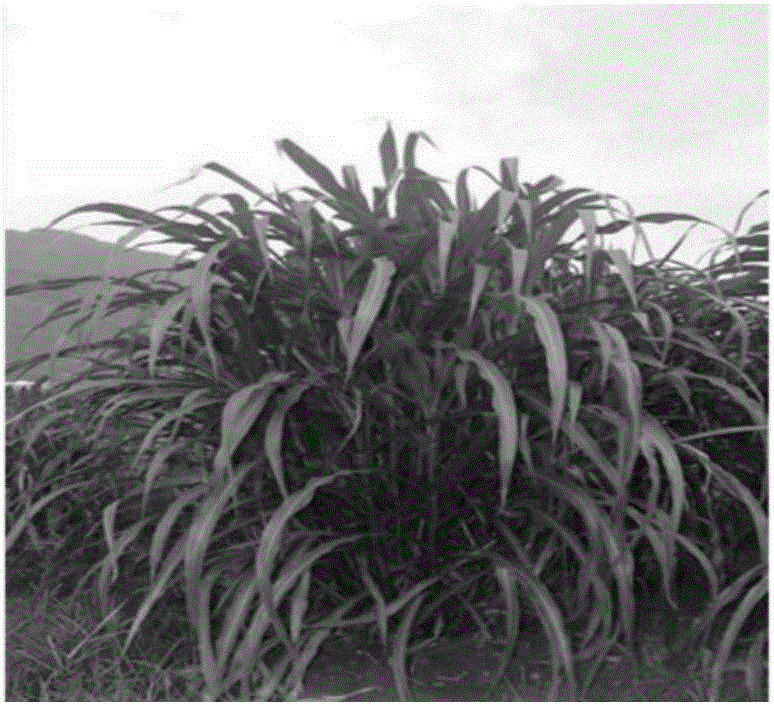Method for cultivating corn-tripsacum monosomic addition line by using corn allopolyploid
A technology of allopolyploidy and rubbing grass, which is applied in the fields of botanical equipment and methods, applications, plant gene improvement, etc., can solve the problems of low success rate of distant hybridization and difficulty in using germplasm of closely related species, and achieve work Small amount, simple method, good stability
- Summary
- Abstract
- Description
- Claims
- Application Information
AI Technical Summary
Problems solved by technology
Method used
Image
Examples
Embodiment 1
[0046] Embodiment 1: creation of corn-friction grain monomer addition system
[0047] Proceed as follows:
[0048] (1), MTF-1 (Tripsazea creammaizeT., 2n=76) (see figure 1 ) were planted in flower pots (the size of the flower pots was 40 cm in diameter and 35 cm in height); from the end of March, 10 batches were planted in each batch of corn inbred line Mo17 (Zea mays L., 2n=20) at intervals of 3 days, 20 plants were planted in each batch.
[0049] (2) Bagging the MTF-1 ears before silking, and cutting the MTF-1 filaments to 2-3 cm after the MTF-1 ears were silked, and then pollinating MTF-1 with Mo17 as the male parent , repeat pollination for each ear at least 3 times, mark on the bag after each pollination, harvest the seeds when they are mature, and get F 1 generation.
[0050] (3), April 2013, the F obtained in step (2) 1 The generation seeds are planted in the nutrient bowl of the artificial climate box, and germinated under the condition of 28 ℃ and humidity of 70%...
PUM
 Login to View More
Login to View More Abstract
Description
Claims
Application Information
 Login to View More
Login to View More - R&D
- Intellectual Property
- Life Sciences
- Materials
- Tech Scout
- Unparalleled Data Quality
- Higher Quality Content
- 60% Fewer Hallucinations
Browse by: Latest US Patents, China's latest patents, Technical Efficacy Thesaurus, Application Domain, Technology Topic, Popular Technical Reports.
© 2025 PatSnap. All rights reserved.Legal|Privacy policy|Modern Slavery Act Transparency Statement|Sitemap|About US| Contact US: help@patsnap.com



